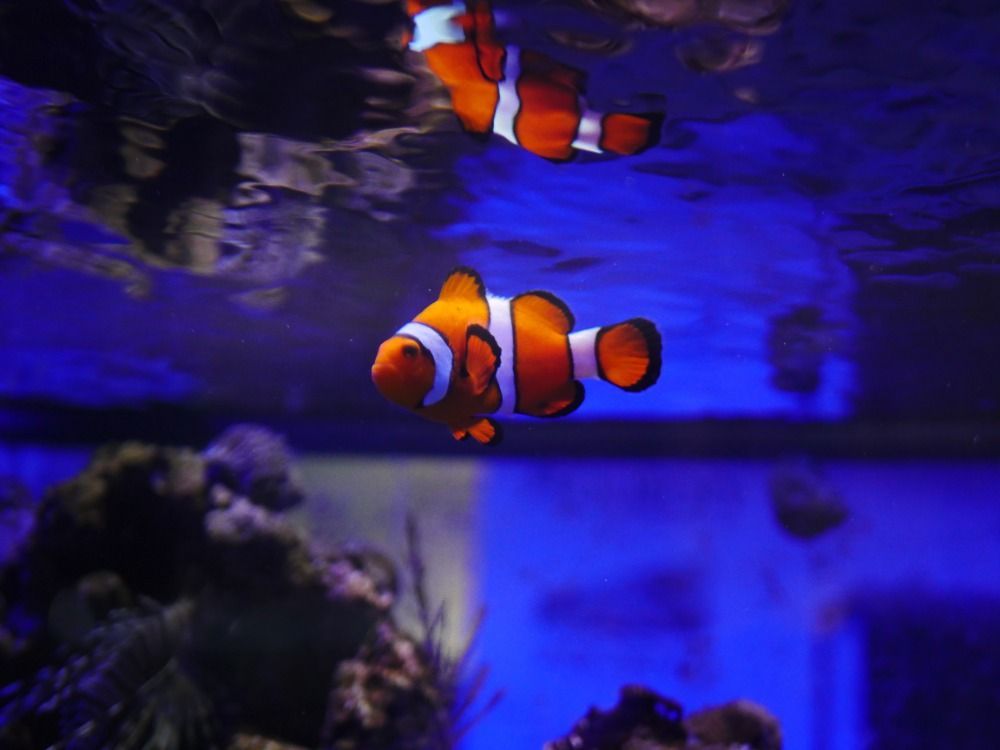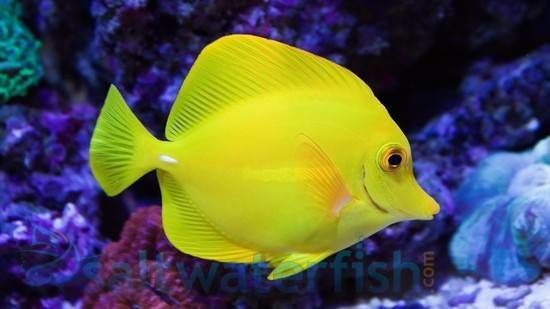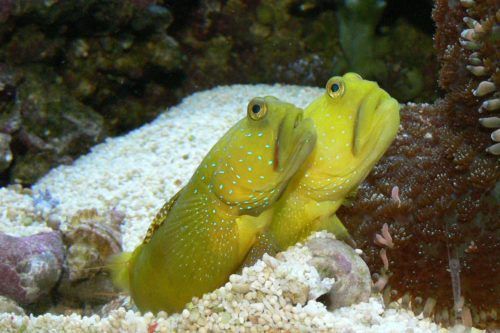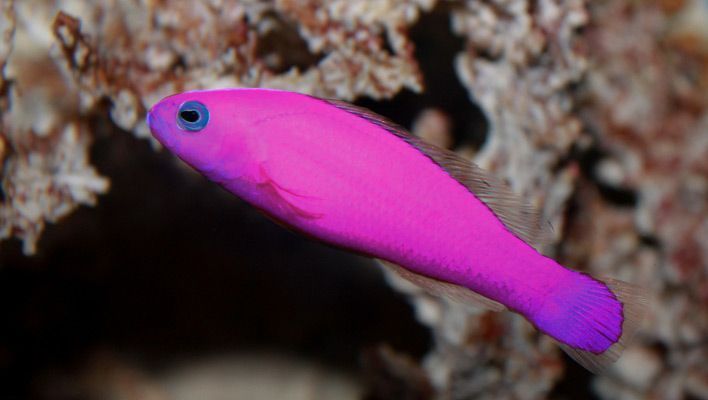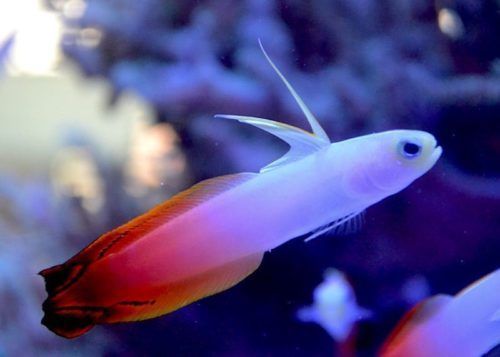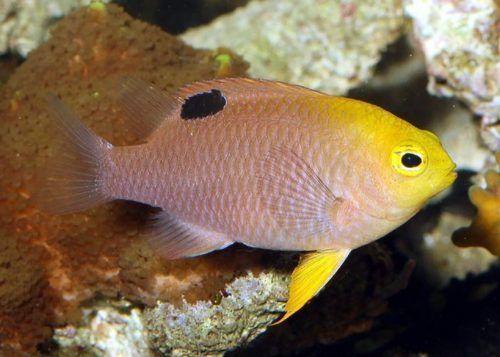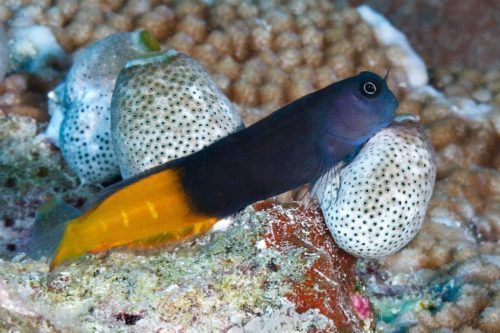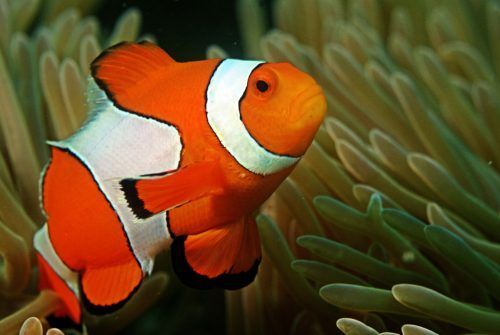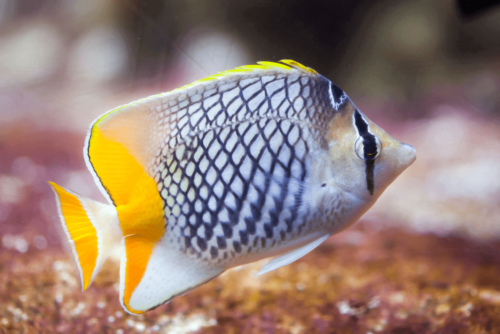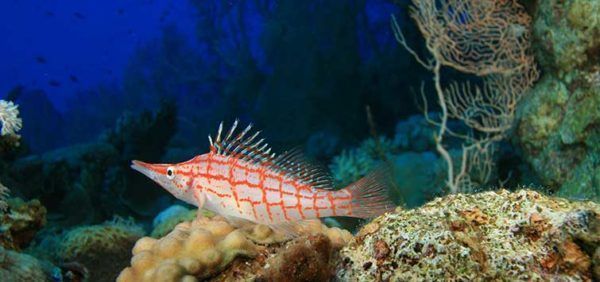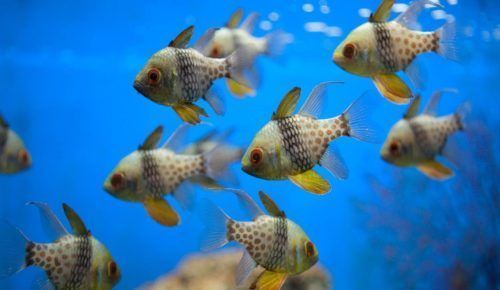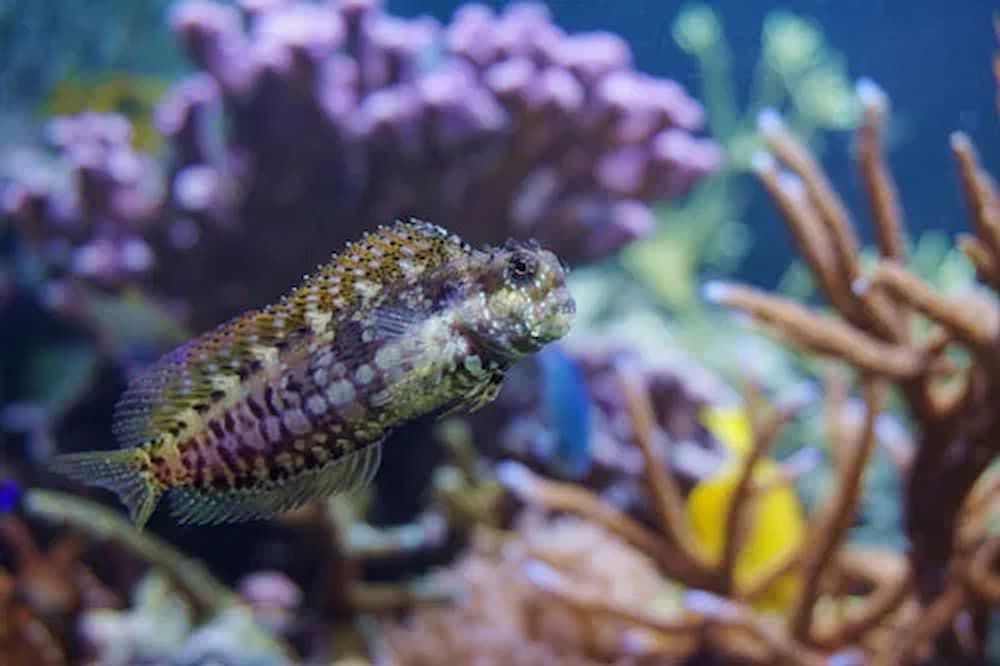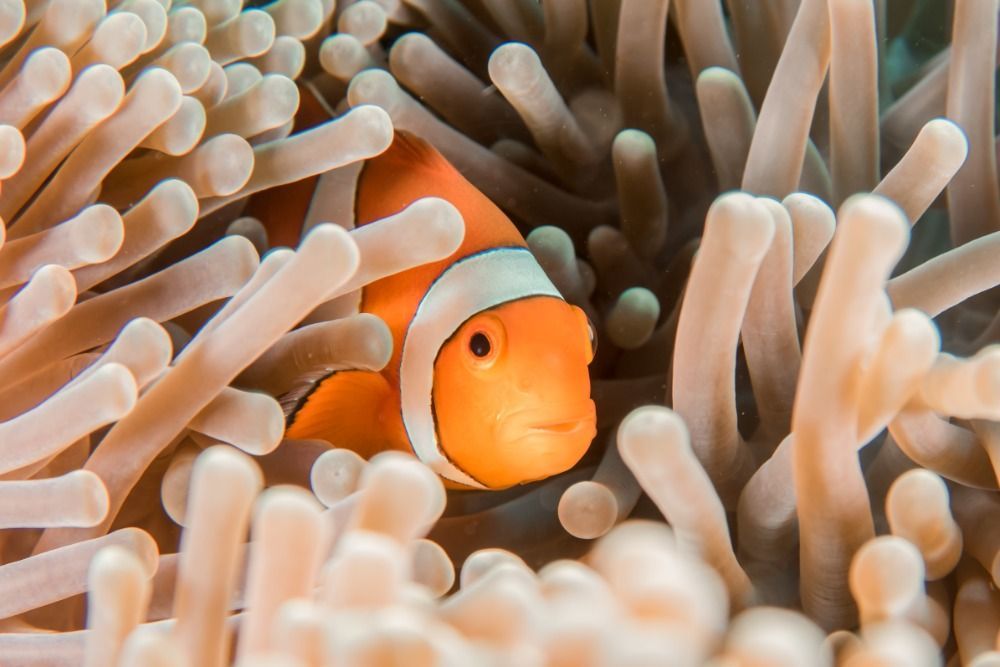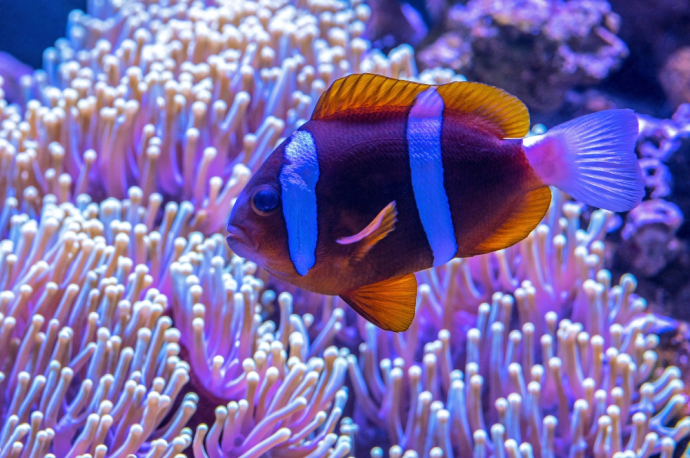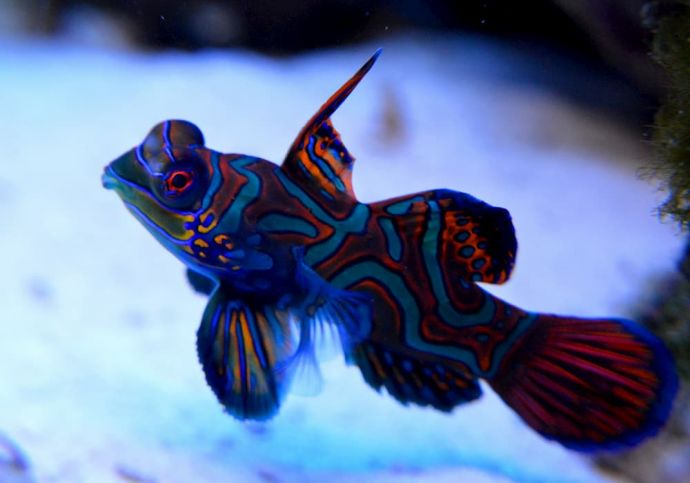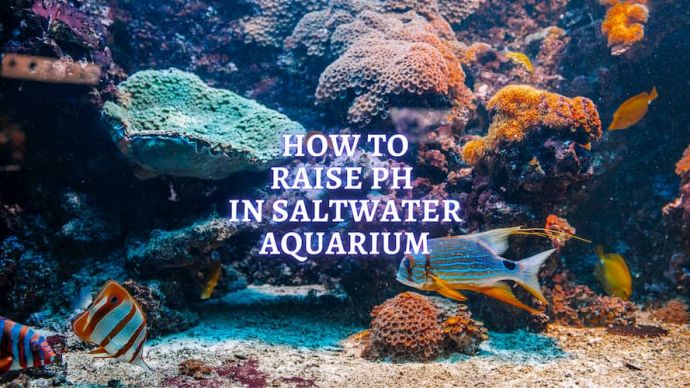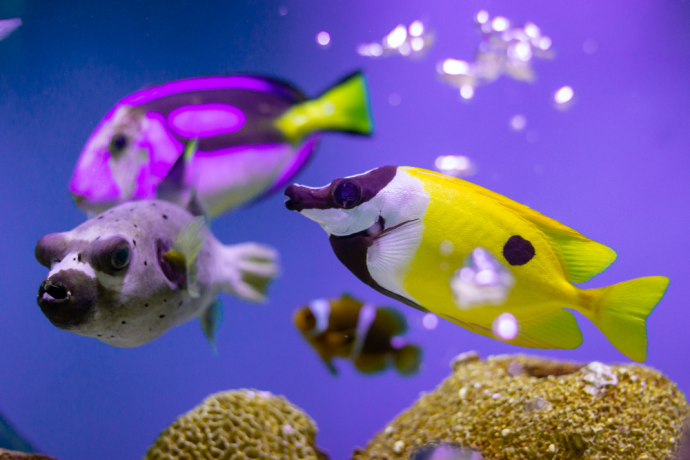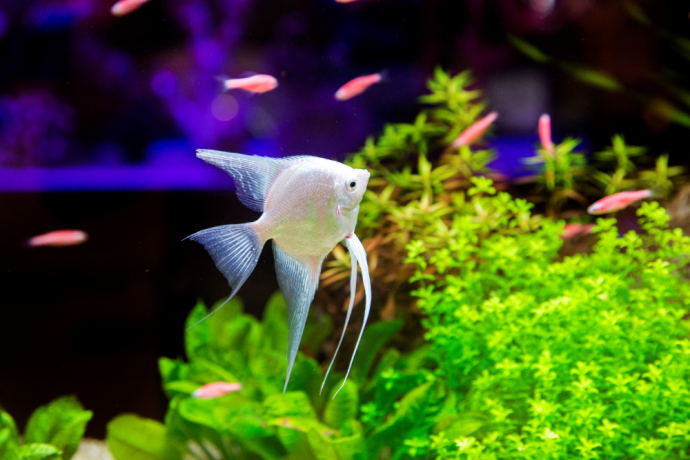15 Saltwater Fish For Beginners (Updated Guide)
Written by:
Author: Alina Andreeva
Alina A. is a professional writer, editor, and pet-lover. She has published over 50 articles on how to care for pets properly. Alina has been writing articles for 3 years, so she has considerable experience in this niche. Her natural curiosity helps her to expand her knowledge and learn new pet care life hacks, which will make your life much easier.
View all 79 articlesLearn about our editorial process and veterinary review board.
Viewed: 1104
Updated on: 10/21/2021
Looking after a pet can be extremely rewarding, and a well-balanced, vibrant, eye-catching aquarium can also be a calming influence within your home. Bringing the life and colors of the sea to your own living room is a unique experience, but it can be daunting. When it comes to saltwater aquariums, it is essential to know precisely how to balance the saltwater levels, clean the tank, and choose the right fish. Luckily for you, we have written a handy guide for all things saltwater.
Which types of Fish can go in a Saltwater Aquarium?
There are plenty of different types of fish that can be housed within a saltwater aquarium but always do your research before adding them. The most important thing is to check that they can survive and thrive in saltwater before ensuring the balance of salt to water is correct.
We have listed some of the most popular varieties of saltwater fish below:
- Clownfish
- Coral Beauty Angelfish
- Flame Angelfish
- Lawnmower Blenny
- Auriga Butterflyfish
- Racoon Butterflyfish
- Dragonettes
- Mandarin fish
- Gobies
- Sand Sifting Gobies
- Shrimp Gobies
- Tangs
- Green Chromis
- Longnose Hawkfish
- Royal Gramma Basslet
- Big Eye Black Bar Soldierfish
- Watchman Gobies
- Chalk Bass
- Dottyback
- Firefish
- Talbot’s Damsel
- Mollies
READ MORE: Good Starter Fish
What is the Best Beginner Saltwater Fish?
Saltwater fish are often regarded as far higher maintenance pet choices than their freshwater brothers and sisters. Keeping the tank clean and the water balanced can take a lot of practice and dedication, but there are ways you can ease the pressure on yourself. One handy way to walk before run is to invest in the easiest starter saltwater fish, ultimately the ones that are easiest to take care of.
Here is our comprehensive list of the 15 best beginner fish to add to your saltwater aquarium:
1. Tangs
These fish can withstand any problems experienced by beginners. This species is distributed in the Indo-Pacific, from the east coast of Africa, east to Hawaii, north to Japan and south to the Great Barrier Reef.
Tangs may often be found in reef aquariums. This fish is chosen for its bright color and excellent health — it is very active and has a big appetite. For a single fish, an aquarium of 80 gallons (0.3 m³) or more is required; this gives it free space for swimming, combined with many living stones overgrown with algae. This fish also need bright lighting, intensive filtration and good water circulation.
Tangs’ diet is based on plant foods: algae, lettuce leaves and dry food for herbivorous fish. It is necessary to add crushed animal food: shrimp, mussels and squid. Algae, which grows in the aquarium, is also an essential nutrient.
An important advantage of this species is its peaceful nature, which allows you to keep a group of several in one aquarium. They calmly relate to most other reef fish. Ideal for reef aquariums, they do not disturb or damage invertebrates.
| Other names: | Blue tang, Palette surgeon fish, Paracanthurus hepatus |
| Minimum tank size: | 180 gallons (0.68 m³) |
| Maximum size: | 10 to 12 inches (30.48 cm) |
| Temperament: | peaceful |
| Diet: | herbivore |
| Coloring: | Blue |
2. Yellow Watchman Goby
The Yellow Watchman is a goby native to the Western Pacific Ocean, where it can be found at depths of 1 to 25 meters in coastal bays and lagoons. It is easily recognized by its bright yellow color and characteristic light spots and transverse stripes in the tail part of the body. They are easy to find in pet stores and are not fussy when it comes to food.
This fish is peacefully related to similar species that live in the sand. They can sometimes bother other fish and show aggression to their relatives, unless you pick up a male-female pair.
They can try to jump out of the aquarium if it is not covered, so, to prevent them from “escaping,” we recommend covering the aquarium with a lid.
It is necessary to feed the bulls of this species with various foods — a mix of shrimp and Artemia, a special frozen food for carnivorous fish species. Don’t forget to feed them at least twice a day.
| Other names: | Yellow prawn goby, Yellow shrimp goby |
| Minimum tank size: | 30 gallons (0.11 m³) |
| Maximum size: | 4-inches |
| Temperament: | peaceful |
| Diet: | carnivore |
| Coloring: | shades of yellow, with blue spots |
3. Chalk Bass
These fish naturally live in the western part of the Atlantic and can be found at depths of up to 10 m near coral reefs with sandy or rocky bottoms. These fish are easy to keep in the aquarium and can be safely recommended to novice aquarists. The fish resist disease better than most and are generally resilient creatures.
Serranus tortugarum has an attractive red-brick color, which is brighter in the upper part of the body and becomes paler as it approaches the abdomen. Vertical thin bluish stripes run from the upper part of the fish’s body to approximately its middle. A dark line runs from the eye to the side of the mouth. All paired fins are transparent; unpaired fins are dotted with a peculiar pattern of spots of various sizes. In adult fish, the edge of the dorsal plumage has a yellowish border. These fish are born hermaphrodites and can act as male or female.
To keep 4-6 fish, you need an aquarium with a volume of about 100 gallons (0.38 m³). If the aquarium is small, you should follow the following ratio: 1 fish should have about 30 gallons (0.11 m³) of water.
| Other names: | Serranus tortugarum |
| Minimum tank size: | 30 gallons (0.11 m³) |
| Maximum size: | 4-inches |
| Temperament: | peaceful |
| Diet: | carnivore |
| Coloring: | white and gold |
4. Monodactylidae
These species live in the Indian and western Pacific Oceans; one species inhabits the west coast of Africa from Senegal to the Congo. They live in water of various salinity.
Monodactylidae contains flocks, and in spacious aquariums, they swim quickly and can change direction abruptly. These are peaceful fish; they get along well with other aquarium inhabitants, except newborn fish, which are considered food.
Monodactylidae males look almost identical to females — this fish cannot change its mating color. In some Monodactylidae species, males attract the attention of females by circling them. After such a mating dance, the female sweeps out up to 4000 eggs. The eggs are washed directly into the water, and the parents do not show any concern for the offspring. It is established that Monodactylidae can spawn almost all year round, but the most massive spawning is during the winter and spring months. Fry appears from caviar on the second or fifth day and soon begin to feed on their own.
| Other names: | Monodactylus |
| Minimum tank size: | 30 gallons (0.11 m³) |
| Maximum size: | 8-inches |
| Temperament: | peaceful |
| Diet: | omnivorous |
| Coloring: | silver |
5. Dottyback
Dottyback have an elongated body, which is almost a solid purple color. The head has a black, V-shaped stripe that runs from one eye to the other through the fish’s lips.
These fish prefer crevices, caves and canopies. The depth of the habitat is usually 1-60 m. They feed on small crabs and shrimps. They can change their gender.
These fish are happy to swim in 30 gallons (0.11 m³) and are suitable for reef aquariums. They do not harm corals and most invertebrates, but keep in mind that small crustaceans can become their food. There must be many shelters, caves and grottoes where the fish can hide, as well as free places for swimming.
| Other names: | Fridman’s Dottyback, or Fridman’s Pseudochromis |
| Minimum tank size: | 30 gallons (0.11 m³) |
| Maximum size: | 3-inches |
| Temperament: | semi-aggressive |
| Diet: | carnivore |
| Coloring: | shades of purple; red |
6. Firefish
The Firefish Goby is an excellent little fish that perfectly complements any (mini or nano) reef tank. The bright colors of this fish (yellow head, white front and pinkish-orange-red back. The dorsal, anal and caudal fins are highlighted in black) make it stand out in any reef reservoir.
These fish should be kept alone, as they will quarrel with other fish of the same species. In the wild, these fish can be found in groups, hovering over the reef, but close to their many shelters, feeding on planktonic food that drifts in the current.
Their diet should be varied and include live and frozen Artemisia, krill, other small crustaceans and minced shrimp. The diet can include ready-made food intended for carnivorous fish. It is advisable to add vitamins to their diet to maintain a bright color and good health. Feed twice a day in small portions.
| Other names: | Nemateleotris magnifica, Firefish goby, fire goby, magnificent dartfish, or fire dartfish |
| Minimum tank size: | 20 gallons (75.71 l) |
| Maximum size: | 3-inches |
| Temperament: | peaceful |
| Diet: | omnivore |
| Coloring: | multicolored variations |
7. Talbot’s Damsel
Talbot’s Demoiselle are small and very bright. They live well in a reef and even a small aquarium. Most species are highly territorial herbivores, omnivores or plankton-eating fish that inhabit coastal waters and coral reefs.
They conflict with fish of their own species, and they get along well with fish of other species. The aquarium should have many shelters. They control the level of algae in the tank and can be purchased in most places.
Their food should include a variety of fresh and frozen ground meat products; you can also add dried seaweed to their diet. Feed in small batches at least three times a day.
| Other names: | Talbot’s Damselfish, Chrysiptera talboti |
| Minimum tank size: | 30 gallons (0.11 m³) |
| Maximum size: | 2-inches |
| Temperament: | semi-aggressive |
| Diet: | omnivore |
| Coloring: | purple; yellow |
8. Molly
Molly belongs to the Poeciliidae family and are considered an easy-to-keep, unpretentious fish. It is easy to breed and has a bright, variegated body color. However, the latter statement applies to breeding and hybrid forms. Wild fish look different and are practically not found in home aquariums.
Its natural range extends across South and Central America north from Venezuela and Colombia to Mexico, with isolated populations on some Caribbean Islands. It is currently found in the natural habitat of the United States, Southeast Asia and southern regions of Europe. In nature, the fish inhabit heavily overgrown shallow reservoirs, including in the coastal zone, where fresh and seawater mix.
During long-term breeding, Mollesia sphenops have successfully adapted to life in a different environment, including soft water, so hydrochemical composition is no longer significant in modern artificially bred breeds. It can live in fresh or saltwater.
Molly sphenops are peaceful and get along well with other non-aggressive fish of comparable size. Males are sometimes overly active during courtship, and, in small aquariums without shelters, can cause unnecessary anxiety for females.
| Other names: | Molly fish |
| Minimum tank size: | 10 gallons (37.85 l) |
| Maximum size: | 4-5-inches |
| Temperament: | peaceful |
| Diet: | omnivore |
| Coloring: | various |
9. Bicolor Blenny
These fish are common in the Indo-Pacific, from the Maldives to the Phoenix Islands, north to the Ryukyu Islands, south through Micronesia to the southern part of the Great Barrier Reef.
Their lives are connected to the reef. They live in clear lagoons and on the outer sides of reefs saturated with corals and rock-covered algae. They lead a mostly bottom-dwelling lifestyle, and usually feed on algae growing on rocks. Also, they meet singly.
They are compatible with reef aquariums, but keep in mind that sometimes Bicolor Blenny tends to pluck hard coral polyps and clam mantles. Also, they can be kept in an aquarium with a minimum volume of 120 liters. It is necessary to ensure many living stones with crevices, grottoes and shelters.
| Other names: | Two-Colored Blenny, Flametail Blenny |
| Minimum tank size: | 30 gallons (0.11 m³) |
| Maximum size: | 4-inches |
| Temperament: | peaceful |
| Diet: | herbivore |
| Coloring: | blue to brown and orange |
10. Clownfish
Clownfish are the brightest representative of the deep sea andcan live not only in nature, but also in the aquarium. Clownfish are rich, bright shades, from dark blue to bright orange; less often, they are bright red and light yellow.
Clownfish live in the waters of the Pacific and Indian oceans and near East Africa, off the coast of Polynesia and Japan and in the reefs of eastern Australia. The fish live in dense thickets of anemones; this is a fairly good neighborhood because, thanks to the slime on the plant, the clownfish hide from predators among the tentacles of anemones.
The clownfish is quite popular with aquarists because of its bright color and interesting behavior. Another huge plus in keeping clownfish in the aquarium is their unpretentiousness in comparison with other coral fish.
| Other names: | False Percula Clownfish or Common Clownfish |
| Minimum tank size: | 20 gallons (75.71 l) |
| Maximum size: | 4-inches |
| Temperament: | peaceful |
| Diet: | omnivore |
| Coloring: | orange, black, white |
11. Butterflyfish
Butterflyfish are tropical marine fish and are generally between 4.7 and 8.7 inches (22.1 cm) long. This fish can only live in a spacious reef aquarium with many corals. A powerful filtration system is necessary, since they are very sensitive to fluctuations in water parameters (especially to increase the level of nitrogenous compounds).
Food is only live polyps of eight-ray and madrepore corals that grow in the aquarium. It is usually not possible to transfer this type of food to replacement food.
In a reef aquarium, no invertebrates are harmed, except for coral polyps. They are territorial and aggressive to members of their own species. Smaller fish can be driven away by Butterflies from their territory, but they can withstand the onslaught of larger neighbors, such as Angels and Surgeons.
| Other names: | Sunburst, Orange, Brown, Corallicola or Blacklip Butterflyfish |
| Minimum tank size: | 120 gallons (0.45 m³) |
| Maximum size: | 6-inches |
| Temperament: | peaceful |
| Diet: | omnivore |
| Coloring: | golden yellow with black or blue/black eye band |
12. Banggai Cardinalfish
Banggai Cardinalfish are schooling fish with an original color consisting of black stripes and silvery-bluish dots. Young fish are easy to get along with in a community tank. Adult fish can conflict with each other, so they need a lot of free space and shelters.
Settle these fish in the aquarium at the same time. This species can be kept in a reef or regular aquarium. As neighbors, peaceful, not too small fish are suitable. They are not very mobile and often stand hidden among thickets of coral.
In nature, Cardinalfish feed on zooplankton, consisting mainly of small crustaceans, their larvae and fish fry. In the aquarium, Cardinals eat live and frozen Artemia, Daphnia, etc.
| Other names: | Highfin Cardinal, Kaudern’s Cardinalfish |
| Minimum tank size: | 30 gallons (0.11 m³) |
| Maximum size: | 3-inches |
| Temperament: | semi-aggressive |
| Diet: | carnivore |
| Coloring: | black stripes on white, orange or silver |
13. Longnose Hawkfish
There is a wide range of this species, covering almost the entire Indo-Pacific: The Red Sea, the coast of southern and eastern Africa, south Japan and New Caledonia, in the Pacific Ocean from the Gulf of California to the Cortez Sea and from northern Colombia to the Galapagos Islands.
The main background of these fish are practically white, on which a grid-like drawing is bright red. The front rays of the dorsal fin have a tuft of small bristles at the tips.
The aquarium for this species should include a sufficient number of shelters and the desirable branches of the gorgonian on which these fish like to sit.
| Other names: | N/A |
| Minimum tank size: | 30 gallons (0.11 m³) |
| Maximum size: | 5-inches |
| Temperament: | semi-aggressive |
| Diet: | carnivore |
| Coloring: | white |
14. Pajama Cardinalfish
Its peaceful and unpretentiousness nature make this fish popular among aquarists. Pajama Cardinalfish are great for the reef and in nano-size.
Almost all types of food are suitable for this fish. Due to its calm behavior in the aquarium, shoulder straps are always visible, since most of the time is spent in open spaces without stones and decorations.
You can keep a pack or a pair. They can breed in an aquarium, but newborn fish are tiny and difficult to save.
| Other names: | N/A |
| Minimum tank size: | 30 gallons (0.11 m³) |
| Maximum size: | 3-inches |
| Temperament: | semi-aggressive |
| Diet: | carnivore |
| Coloring: | variated browns, yellows, tans, off-whites, creams, mutli-patterned |
15. Lawnmower Blenny
Lawnmower blenny, a very popular aquarium fish, has a peaceful nature. While this underwater inhabitant is easy to keep, large ones can attack other fish in the aquarium. Never keep them with seahorses and sea needles. Lawnmower blenny can also pluck corals and shellfish.
The fish eats algae from aquarium glass and stones, which helps to keep the it clean. The appetite of the blenny requires the constant presence of algae. In addition, these fish feed on spirulina, flake-like, granular and frozen feeds for herbivores.
| Other names: | Algae Blenny, Jewelled Rockskipper Blenny, Rock Blenny |
| Minimum tank size: | 30 gallons (0.11 m³) |
| Maximum size: | 6-inches |
| Temperament: | peaceful |
| Diet: | herbivore |
| Coloring: | shades of brown speckles on white |
READ MORE: Best LEDs for Reef Tank
Frequently Asked Questions
🐠 What is the most natural Saltwater Fish to take care of?
There are several friendly and good saltwater fish to start with when embarking on your aquarium journey. However, the three we would recommend as the easiest to deal with are Clown Fish, Tangs, and Mollies. Clownfish are very easy to take care of. Tangs are very resilient and can cope with your learning process, while mollies can survive in fresh and saltwater, putting less pressure on immediately perfect balancing.
🐟 Are Clownfish suitable for Beginners?
Finding Nemo himself! These are among the most popular fish pets because they are straightforward to take care of. If you are looking for the most easy-going sub-species of clownfish, then opt for the False Percula. Not only are clownfish themselves easy to find in pet shops, but the dry pellets and frozen food they like to munch on are also readily available. Therefore, you won’t be running around town or scouring the internet for any rare food sources. In terms of adding a bit of life to your tank, clownfish are not ones to hide as much as some species, meaning they add a lot to your saltwater community.
🐠 Are Saltwater Aquariums hard to maintain?
Saltwater aquariums are usually more expensive than their freshwater alternatives, and they are more time-consuming to maintain extra equipment, water changes, and special lighting. However, it is not as challenging to maintain a saltwater aquarium as some may think, plus you get rewarded with a vast array of bright and colorful aquatic species to choose from. When managing a saltwater fish tank, you should ensure that the water temperature remains between 23 and 28 degrees Celsius or 73 and 82 degrees Fahrenheit. The amount of salt in the water should be kept between 34 and 37 parts per 1,000 units of water. So, stick as close to that as possible for your fish to thrive. You should also test the pH level to be sure. Finally, ensure that you regularly clean the tank, rehousing to fish as you do so. As well as the tank itself, you should invest in a special filter and lighting system, if the container does not come with them already fitted. The aim of the game is to keep the conditions of the tank and water as close to their natural habitat as possible. However, do not be put off, there is no reason why a beginner cannot start with a saltwater aquarium.
You can read a bit more about Most Popular Saltwater Fish.
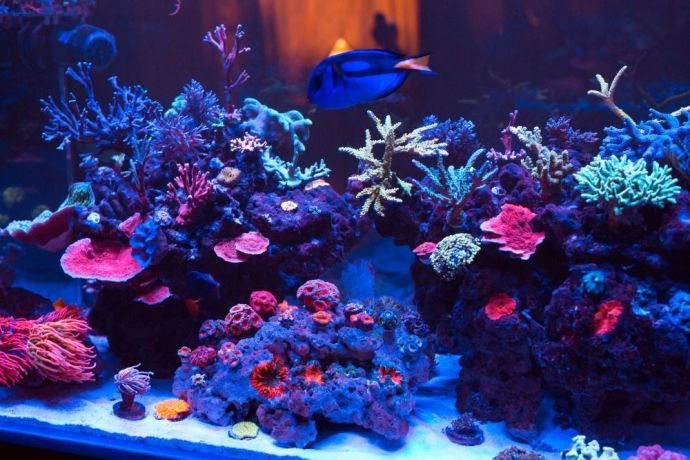 Fish Owners Tips Saltwater Refugiums: How to Make a Refugium for Saltwater Aquarium?
Fish Owners Tips Saltwater Refugiums: How to Make a Refugium for Saltwater Aquarium? - 735
- 0









